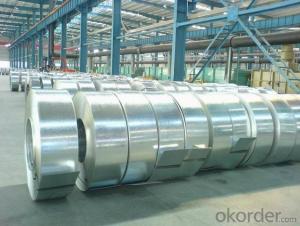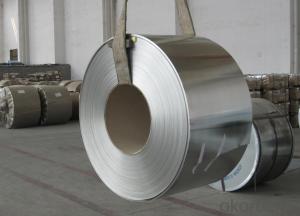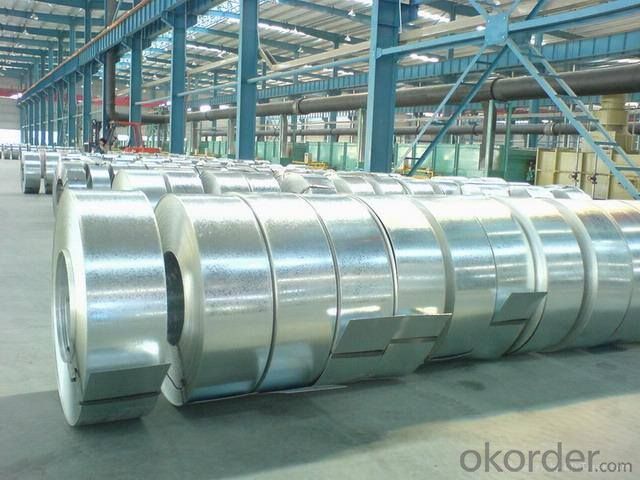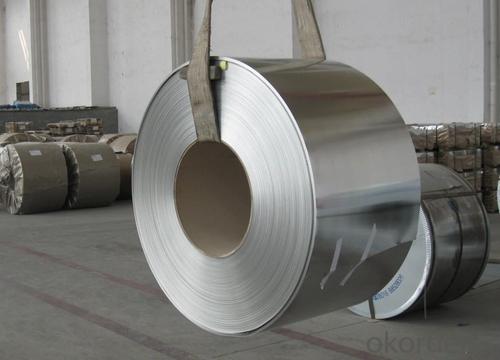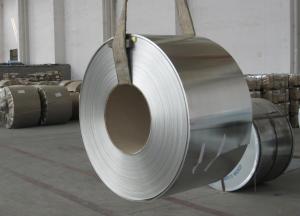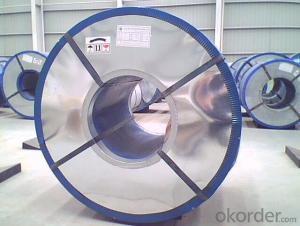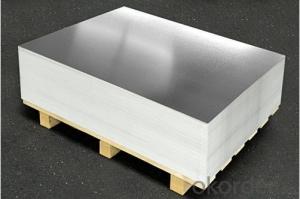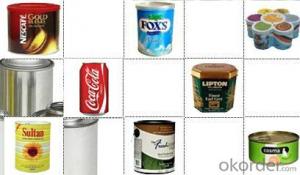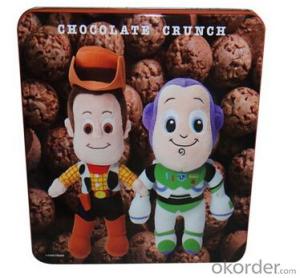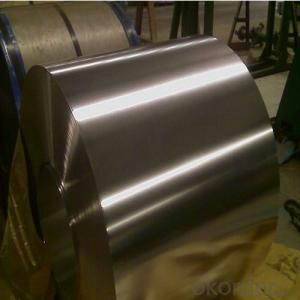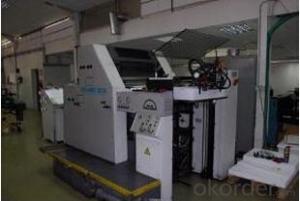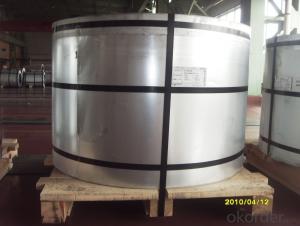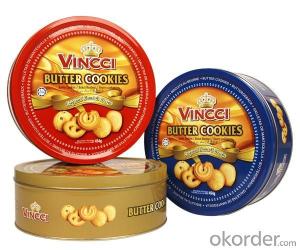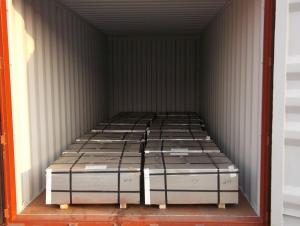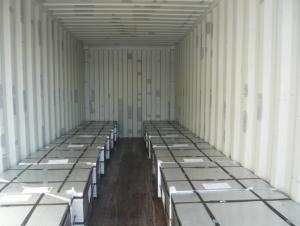MR Material Tinplate for Metal Cans Uasge, BA/CA
- Loading Port:
- Tianjin
- Payment Terms:
- TT OR LC
- Min Order Qty:
- 20 m.t.
- Supply Capability:
- 50000 m.t./month
OKorder Service Pledge
OKorder Financial Service
You Might Also Like
Specification
1.Usage
Tinplate is widely used for making all types of containers, containing industrial usage such as paint can, oil can, aerosol cans etc., and food cans like milk powder cans, tomato paste can, dry food cans etc.
2. Tinplate production Process
cold rolling mill---degreasing production line---tension leveler---batch annealing furnaces/continuous annealing line---tin coating line---cutting line---stock area
3. Specification
standard: GB/T2520, JIS G3303, DIN EN10202
Material: MR /SPCC
Thickness available: 0.16-0.50MM
Width available: 600~1050MM
Temper grade: T1 – DR8
Tin coating: ordinary 2.8g/2.8g, 5.6g/5.6g and others
Package: sea worthy export package.
Applications: Tin can for chemicals & paint cans, industrial cans, food cans
4.Batch Annealing Furnace
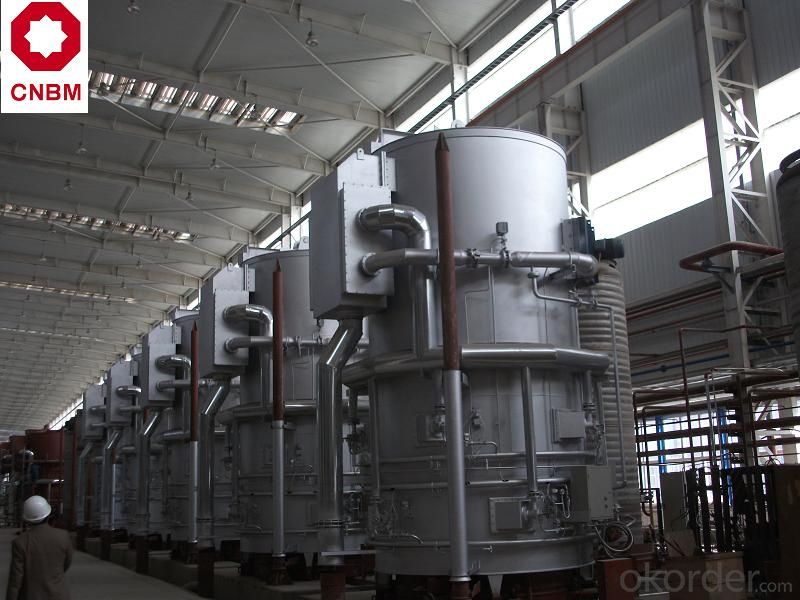
5. FAQ
a. what's the annual output?
about 400,000~500,000 tons per year.
b. what's your advantage than other supplier?
we have overseas warehouse all over the world, like Saudi Arabia, Oman, UAE, Kuwait, Russia, South Africa etc.
c. how long is the delivery time?
about 45~55 days for SPCC, while 60~70 days for MR material
d. how to control the quality during production process?
inside our workshop, we have MES syestem. It will show the status of each production step.
- Q: What are the main applications of tinplate in the textile industry?
- Tinplate is commonly used in the textile industry for applications such as canning and packaging of textile products. It provides a protective and decorative coating that enhances the visual appeal and durability of the packaging materials. Additionally, tinplate is also utilized for manufacturing sewing machine needles and other textile machinery components, as it offers excellent corrosion resistance and strength properties.
- Q: What are the common defects in tinplate?
- Some common defects in tinplate include rust spots, black specks, pinholes, and uneven coating.
- Q: What are the quality control measures for tinplate production?
- Quality control measures for tinplate production typically include various inspections and tests at different stages of the manufacturing process. Some common quality control measures include: 1. Raw material inspection: The quality of the steel used for tinplate production is assessed, including its chemical composition, thickness, and surface finish. Any deviations from the desired specifications are flagged. 2. Coating inspection: The tin coating applied to the steel is examined for uniformity, adhesion, thickness, and absence of defects like pinholes or scratches. This ensures the protective and aesthetic qualities of the tinplate. 3. Surface inspection: The surface of the tinplate is inspected for any visible defects such as dents, scratches, or irregularities. This ensures the overall quality and appearance of the final product. 4. Dimensional control: Tinplate sheets or coils are measured to ensure they meet the specified dimensions and tolerances. This includes verifying the length, width, thickness, and flatness of the tinplate. 5. Tinplate performance testing: Selected samples are subjected to various mechanical and chemical tests to assess their performance. These tests can include assessments of corrosion resistance, adhesion, hardness, and tin coating integrity. 6. Packaging inspection: The final tinplate products are inspected for proper packaging, labeling, and protection. This ensures that the tinplate reaches customers in good condition and meets their expectations. By implementing these quality control measures, manufacturers can maintain consistent product quality, meet customer requirements, and ensure the reliability and functionality of tinplate products.
- Q: What are the latest innovations in tinplate technology?
- Some of the latest innovations in tinplate technology include the development of lightweight tinplate materials, improved corrosion resistance coatings, advanced printing techniques for high-quality packaging designs, and the use of recycled materials in tinplate production to promote sustainability. Additionally, there have been advancements in the manufacturing processes to enhance efficiency and minimize waste.
- Q: Can tinplate be used for packaging beverages?
- Yes, tinplate can be used for packaging beverages. Tinplate is a durable and corrosion-resistant material that can effectively protect the contents of beverage packaging from external factors such as light, moisture, and oxygen. It is commonly used for packaging canned beverages like soda, beer, and juices.
- Q: Who can tell me how to adjust the roller seal defects?
- Such as material, hardness, etc., especially relatively small tank diameter (such as 202 diameter cans). If the material of the tinplate is thin and the hardness is large, it will be more difficult to ask for it. Because in this case, the material in the double curling process will be less plastic, but the wrinkles will be larger.
- Q: What are the limitations of printing on tinplate?
- There are several limitations to consider when printing on tinplate. First, tinplate is not a very smooth surface, which can affect the quality and resolution of the printed design. Secondly, tinplate is prone to corrosion, so special coatings or treatments may be required to ensure the longevity of the print. Additionally, tinplate is a rigid material, making it more challenging to print on curved or irregularly shaped objects. Lastly, the printing process on tinplate can be more time-consuming and costly compared to other printing methods, as it often requires specialized equipment and inks.
- Q: Can tinplate be used for packaging confectionery products?
- Yes, tinplate can be used for packaging confectionery products. Tinplate is a popular choice due to its durability, ability to retain the quality and freshness of the confectionery, and its resistance to corrosion. It also provides a visually appealing and customizable packaging option for confectionery products.
- Q: How does the printing process affect the durability of tinplate?
- The printing process can significantly affect the durability of tinplate. The printing ink used can provide a protective layer that helps prevent corrosion and enhance the tinplate's resistance to external factors such as moisture and abrasion. Additionally, the printing process can also impact the adhesion of the coating on the tinplate, which can further improve its durability.
- Q: How does tinplate perform in terms of heat transfer?
- Tinplate performs poorly in terms of heat transfer compared to other materials.
Send your message to us
MR Material Tinplate for Metal Cans Uasge, BA/CA
- Loading Port:
- Tianjin
- Payment Terms:
- TT OR LC
- Min Order Qty:
- 20 m.t.
- Supply Capability:
- 50000 m.t./month
OKorder Service Pledge
OKorder Financial Service
Similar products
Hot products
Hot Searches
Related keywords
